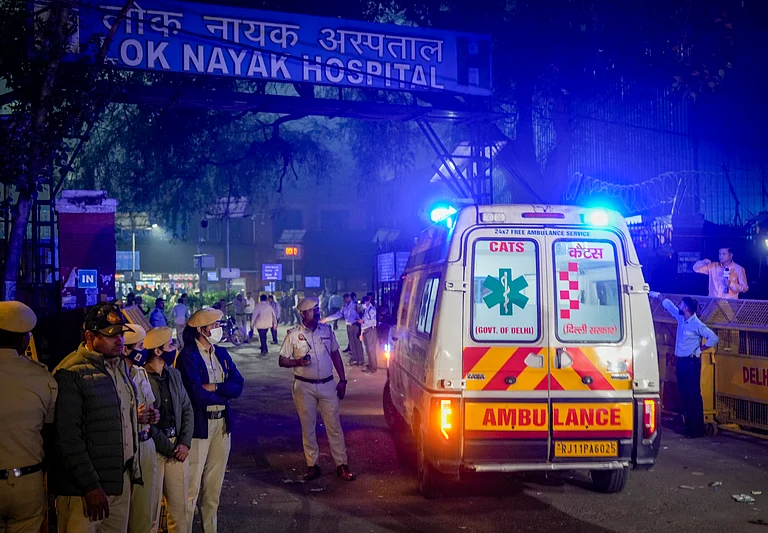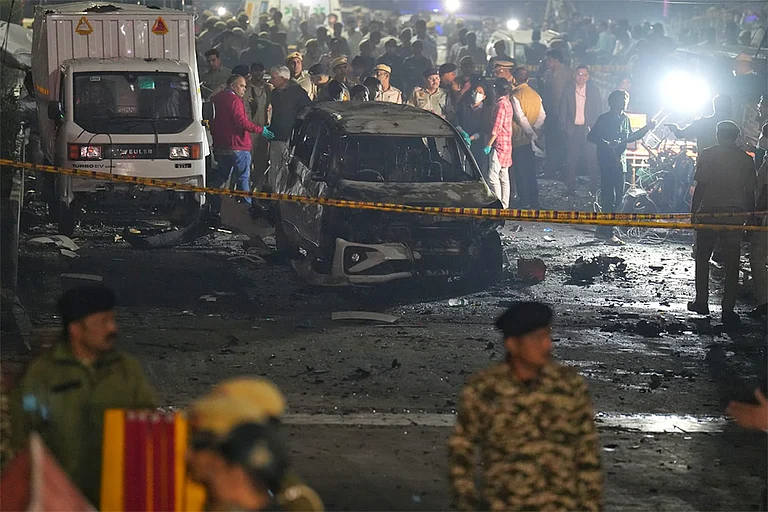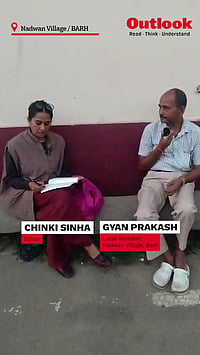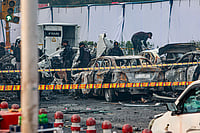Walk around in the cool climes of Dharamshala these days and you will hear breathless stories about Tibetan resistance against Chinese rule, those heroic deeds long before Lhasa exploded last week. You will hear about 53-year-old nomad Rongye Adak's admirable courage during an annual horse-racing festival at Lithang in Sichuan province on August 1, 2007. Rongye walked to the dais where Chinese officials were seated and asked the audience whether they wanted the Dalai Lama to return to Tibet. The thousands assembled there cheered; the local police promptly whisked Rongye away, sparking off protests that soon spread to other parts of Lithang before they were quelled. During his trial, the rebel told the judge, "There is nobody in Tibet who does not have...the desire to see the Dalai Lama. We have no freedom to say so." The judge promptly countered, "You not only met the Dalai Lama twice in India but also came back and initiated action here in Lithang, proving you are making plans to split and subvert the country." The Tibetan government-in-exile here honoured Rongye's two daughters studying in Mussoorie.
You will also hear about the Dalai Lama's 2006 call to the pilgrims attending the Kalchakra ceremony in Amravati asking them to abandon 'chuba', or traditional robes made of animal pelts. Among the pilgrims were those who had come down recently from Tibet. Soon bonfires of chuba were lit across Tibet and villagers there resolved not to kill animals for their robes in future. This spontaneous show of respect for the Dalai Lama reportedly made Chinese officials extremely nervous, a feature typical of occupiers in history.
Here in Dharamshala, you will further hear stories about China's disdain for religion. In May 2007, for instance, Chinese officials smashed a 30-foot statue of the revered Guru Padmasambhava (the Indian teacher who brought Buddhism to Tibet) outside Samye monastery near Lhasa. Around this time China also turned down the Dalai Lama's request to visit Tibet as a pilgrim. The resentment of Tibetans deepened in September 2007 when Beijing announced that all future incarnations of the Dalai Lama and other religious leaders must have their approval.
This then was the backdrop to the peaceful demonstration organised in Lhasa on March 10 to commemorate the 49th Tibetan Uprising Day. The suppressed anger and resentment bubbled over, leading to pitched battles between the police and people, the conflagration soon spreading to provinces where Tibetans are dominant. Last week's rioting also testified to the durability and efficacy of the links between the Tibetans living in exile here and the inhabitants of Tibet, though not to the alarming extent Beijing imagines them to be.
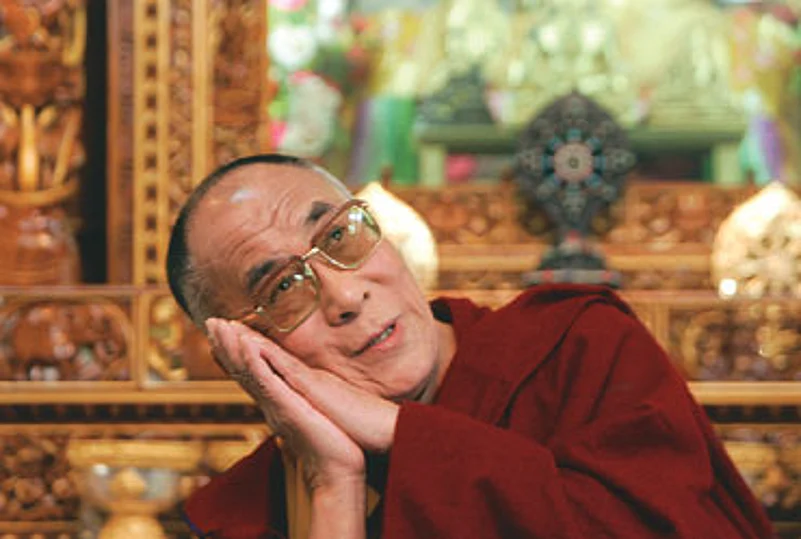
The Middle Leaning: The Dalai Lama at a press conference in Dharamshala
The Tibetan government in Dharamshala has in fact been encouraging recent exilés to return home and help preserve Tibetan ethnicity. Its prime minister Prof Samdhong Rimpoche told Outlook, "We are encouraging monks who come here to study to return to Tibet and work among the people there. Although anyone returning from India is suspect and his activities are monitored, yet around 13 per cent of those who escaped here have returned in recent years."
Lobsang Yeshe is a typical example of those who slipped from Tibet into India. A monk in the Kirti monastery of Amdo Ngaba, Tibet, he arrived in Dharamshala in 2003. Says Lobsang, "Around 100 monks like me who came here for higher studies have returned to the Kirti monastery. Most would rather stay here, but to spread the word of the Dalai Lama back home is more important." Lobsang, who keeps in touch with relatives back home, says a resistance movement has been palpably building up over the last two years. "For instance, monks in remote areas have refused to renounce the Dalai Lama. There have been many such defiant acts about which the outside world hasn't heard," he says. Monks like Lobsang and some in the laity have exploited the popular resentment to keep the flag of resistance flying, much to Beijing's chagrin.
Modern technology has helped foster these links between Tibet and the government-in-exile. It's difficult to suppress e-mails, for instance. The Tibetan freedom movement has attained high visibility across the globe, providing yet another tool to Tibetans for embarrassing the Chinese. And Tibetan support groups have mushroomed and acquired muscle over the years. Among them is Students for a Free Tibet (SFT), which has held several training camps, including in India, to train activists to disrupt the Beijing Olympics. It yielded immediate results in 2007—SFT activists unfurled a Free Tibet banner at the Everest Base Camp when the Chinese practice team began its ascent with a replica of the Olympic torch. A similar banner was hoisted at the Great Wall of China in August 2007. Live pictures of these two protests were beamed worldwide. Says its New York-based executive director, Lhadon Tethong, "SFT has learnt strategic skills from organisations like the Greenpeace. When our team was at the Great Wall, I was blogging from inside Beijing and was later arrested. Our action greatly moved the people inside Tibet."
Not only this, the SFT along with the more militant Tibetan Youth Congress (TYC) and three other organisations launched the Tibetan People's Uprising Movement this January. Consisting of members both inside and outside Tibet, the movement has a militant agenda in comparison to the Dalai Lama's, seeking to "take control of our political destiny by engaging in direct action to end China's illegal occupation of Tibet". It was under its aegis that the 'Return March to Tibet' was organised from Dharamshala to Tibet. The first batch of 100 was stopped in Himachal Pradesh; another batch of 44 is in Punjab on its way to Tibet, a goal they most certainly won't realise.
The growing militancy among Tibetans could compel the government-in-exile to move away from the Dalai Lama's "Middle-Way approach" that recognises China's sovereignty over their homeland and seeks only "meaningful autonomy" for Tibet. Already, ordinary Tibetans feel last week's unrest in Tibet has blown the Dalai Lama's approach into smithereens. "No autonomy, only freedom for Tibet" is the new slogan in Dharamshala. TYC president Tsewang Rigzin told Outlook, "We are seeing history in the making. There should be concrete action to seize the advantage. We call on Tibetans inside Tibet to continue fighting Chinese domination."
Even parliamentarians of the exiled Tibetan assembly admit privately that autonomy isn't acceptable to young Tibetans. Their unease is reflected in the annual statement of the Kashag (Tibetan cabinet) on March 10. Citing examples of Chinese suppression of religious rights and Beijing's concerted attempts to malign the Dalai Lama, the statement concluded, "Consequently, it has made it more difficult for the exilé Tibetan administration to guide the Tibetans in and outside Tibet to abide by the Middle-Way policy."
Why hasn't Beijing accepted the Dalai Lama's Middle Way, considering that it accepts China's sovereignty over Tibet? For one, Beijing wants Tibetans to renounce the idea which claims they were historically never a part of China. Second, China is opposed to the reunification of all Tibetans, a Dalai Lama demand. Explains Prof Samdhong, "China wants to obliterate history in order to legitimise its occupation of Tibet. While we are ready to forget the past and accept Chinese rule now in the interest of our people, how can we deny the historical fact that Tibet was once an independent country?"
Ironically, last week's protests in Lhasa have papered over the divide between the government and the powerful Tibetan ngos. A committee has been formed to provide leadership and direction to the exile community to deal with the current crisis. It's too early to tell what lies ahead, but one thing is clear—the contours of the Tibetan struggle have changed perceptibly.







